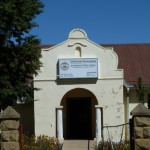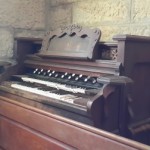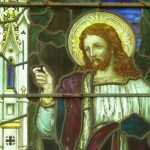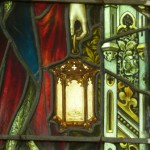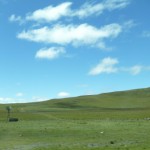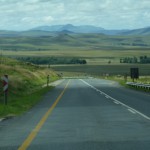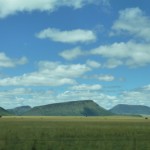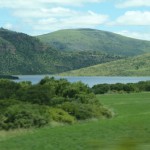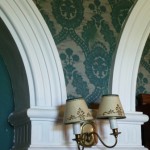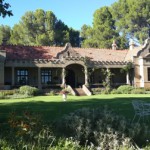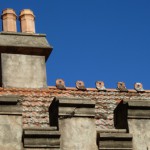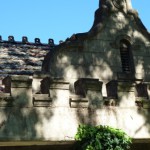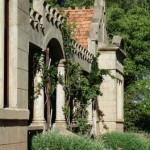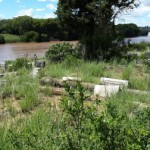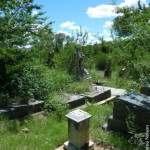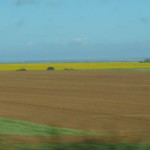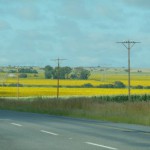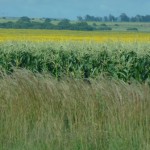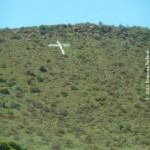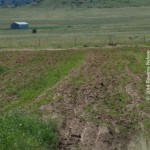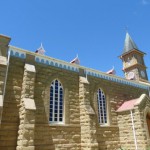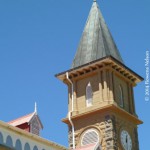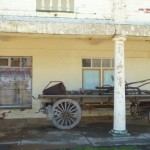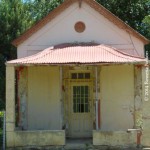Coffee and rusks at 07:00 provided enough fuel to get showered and presentable before a light breakfast of fruit and yoghurt, provided in our unit.

It was around 09:00 when we headed to the car and I coaxed Madame GPS into leading us to the Cory Library at Rhodes University, on the corner of Somerset Street and Lucas Avenue. She seemed to be having a slow start to the day, too, staying sullenly silent until the last moment, when she would suddenly become very annoyed and insist that we turn one way or the other. She led us to our destination, though: the Eden Grove building in which the library is housed on the ground floor. Unfortunately, she could do nothing to improve the parking situation, so I turned her off while we drove up and down Lucas Avenue and then sat and waited outside the library in the hope that someone would leave and we could pounce upon their parking. Our patience was rewarded at about 09:20 when a bunch of students, a good number of them barefoot, began to spill out the doors.
A Hard Day’s Work!
We parked and, armed with camera, laptop, notebooks and HB pencils, marched into the silence of the Cory Library. I had read about the genealogical research process at the Cory on their website and knew that we each had to register for a Reader’s Ticket, which we duly did at the reception desk. The very helpful young lady on duty then introduced us to the various resources available, but I already had a list prepared of Anglican Church registers for King William’s Town and Burgersdorp that I desperately wanted to get my hands on. She duly produced them and we started the arduous but fascinating process of searching them for glimpses of ancestors on my father’s side.

In their stained, often fragile pages and ink script, we found ourselves transported back to the late 1840s. Somewhat surprisingly, in 1899, we found an entry for a marriage of one of the suspected Becker great grand siblings (Great Grandma’s sister). The Beckers were German, so I’d thought that marriages, particularly of the women, would likely have taken place in the bride’s church, probably a Lutheran or Baptist one, but clearly this was not always the case. Despite being buoyed by this discovery, we could find no trace of the marriage of Great Granddad George and Great Grandma Augustina Wilhelmina Nelson, or not in the Church of the Holy Trinity, King William’s Town, anyway.
However, in the 1920s, we found records of marriage and banns of marriage for some of the Nelson grand siblings, though not all of them. Besides the obvious details such as names, dates and places, these help to paint a picture of the movement and dispersion of the family, and can provide tantalising new leads.

Apart from that, though, the Nelsons remained stubbornly elusive. We scoured the index cards for early newspapers in the Eastern Cape, the Manuscript Catalogue and the Picture Catalog. We found surname matches and related surnames, but none that appeared to be connected to our tree. We noted them anyway and, just before 15:00, decided that we should call it a day.
Lip-Smacking “Lunner”
Hungry and more than a little parched (food and drink are not allowed in the library, for obvious reasons) we decided to reward ourselves with a meal at Saint’s Bistro on the High Street, and what a reward it was! Their paper menus double as funky placemats, from which we made our choices. My father decided on their Roast Pork Chops, served on apple mash, with crumbed mushrooms & apple cider & rosemary sauce. My mother ordered the Chicken Pesto Pasta: grilled chicken breast, zucchini, basil pesto & cream all tossed in your pasta of choice and topped with parmesan shavings. I eventually settled on the Chicken, Avo & Haloumi Sandwich, served on ciabatta with shoestring fries. All three dishes were absolutely superb. Perhaps our only disappointment was that they left absolutely no space to try the Amarula Crème Brûlée or Apple, Pear & Lime Cheesecake!
A Regroup & a Surprise Discovery
We returned to Henri House late in the afternoon, well fed and watered, so there was certainly no need for dinner. I reconciled our findings and what we still needed to look for at the Cory, before continuing the hunt for family death records. It was then that I discovered one for Leah Mary Lottie Wilkinson née Messenger. Now don’t go asking awkward questions about who she was because the truth is that I’m not absolutely sure, yet. I suspect that, like Minnie Florence, she was a great grand aunt, but I still need a few more pieces of evidence to prove it! Anyway, the death record revealed that her intended place of burial was the Toise River Burial Ground, which none of us had heard of. Google hadn’t really, either, although it was able to tell us that Toise or Toise River was 50 to 60 kilometres north of King William’s Town, where we were headed a few days hence. Hmm – another graveyard adventure in the offing, perhaps?
An Unexpected Visitor & Bedtime Blackout
A little before 21:00, while my mother was reading and I was still wading through Cape civil deaths, Thomas O’ Malley invited himself in. There was no asking, no waiting for an invitation, none of that. He is, you see, the cat of Henri House. His ginger and white form lazily padded around our doorframe and into the living area without any hesitation at all. Only when he was inside did he stop to look us up and down. He attempted to continue his inspection of our unit by meandering toward the second bedroom where my father was already sleeping. We didn’t think this would end well for either of them, but it took a good few minutes of intense negotiation to convince Mr O’ Malley, who eventually turned on his heel, nose in the air, and stalked sulkily out.
Shortly thereafter, we suddenly found ourselves plunged into darkness. Through the door and windows, we could only just see the surrounding houses as vague silhouettes against the silky night sky and concluded that a general power failure must be to blame. It seemed like an opportune time to call it a night after a full, blessed day of working side by side with one another, immersed in family and history…






